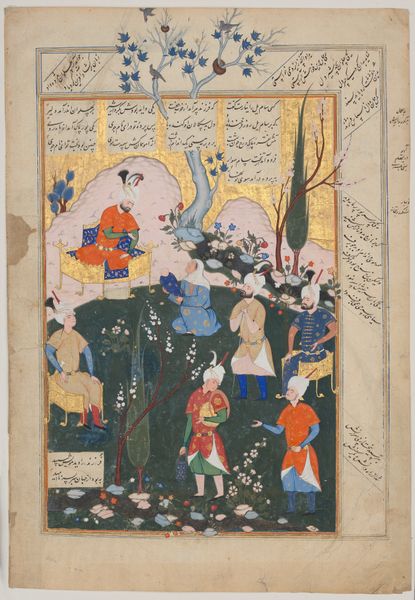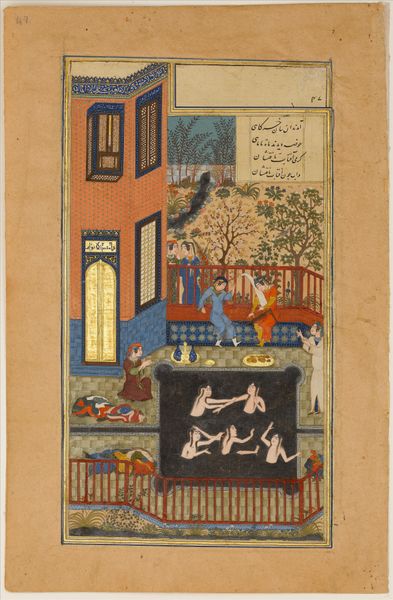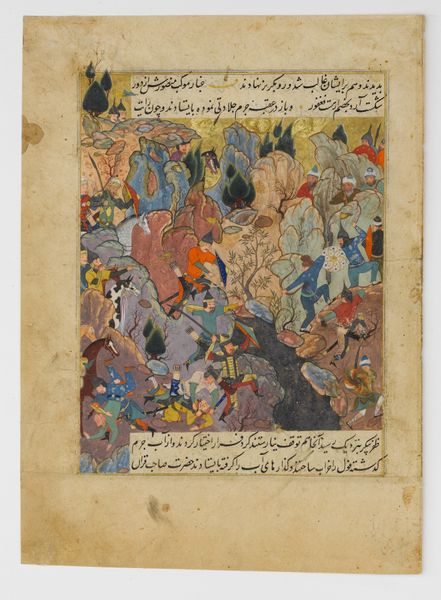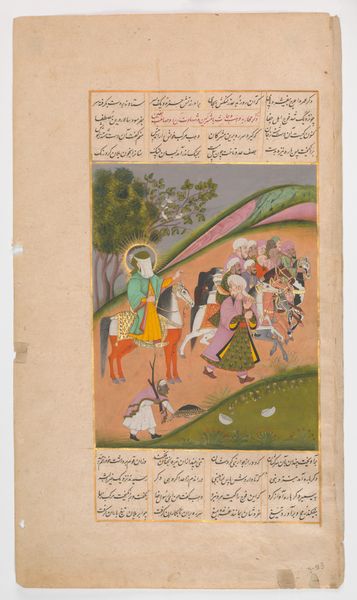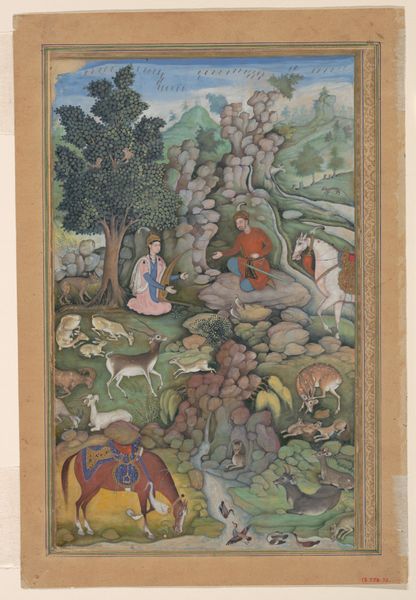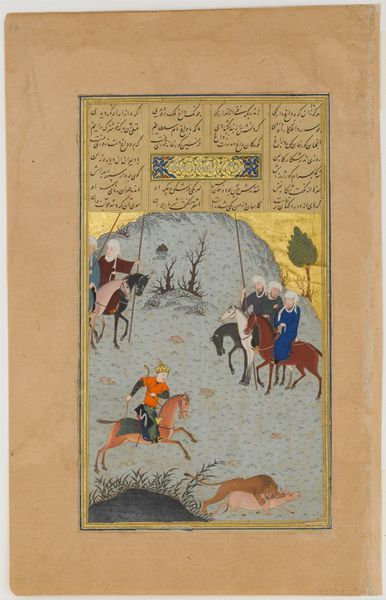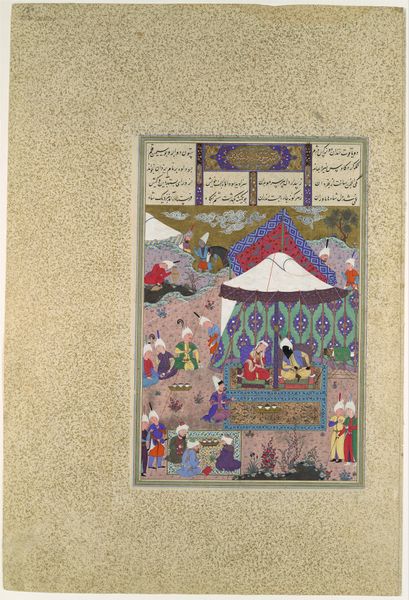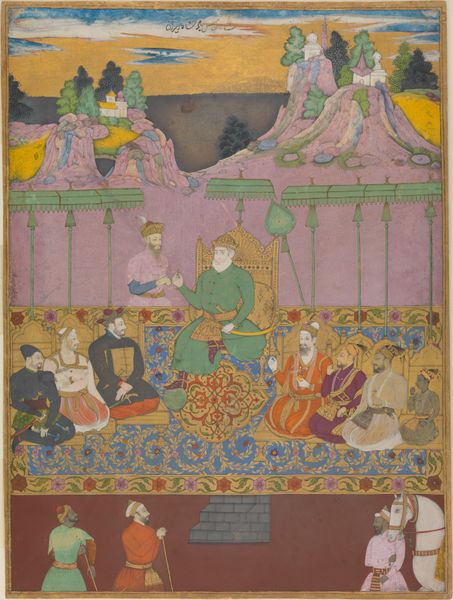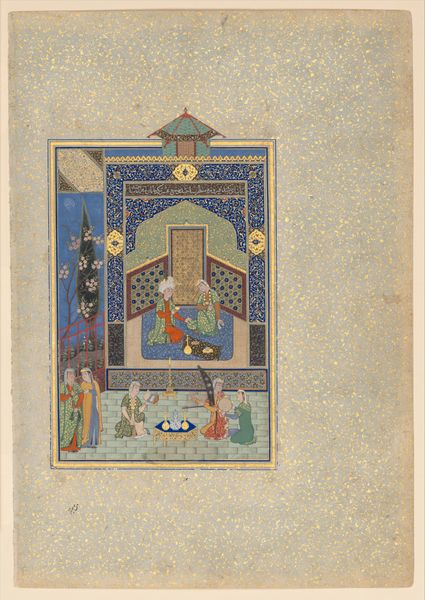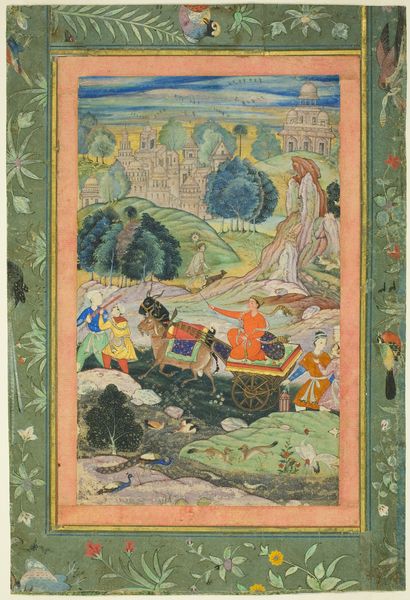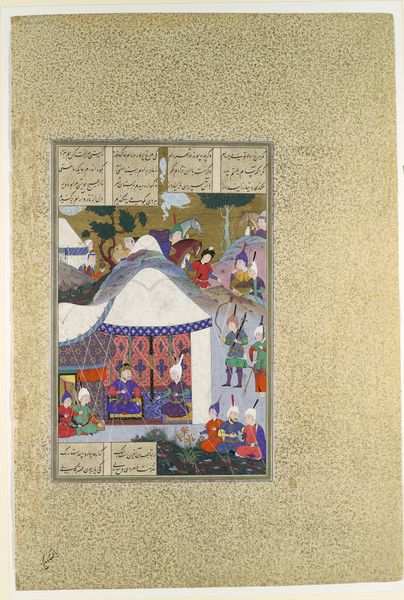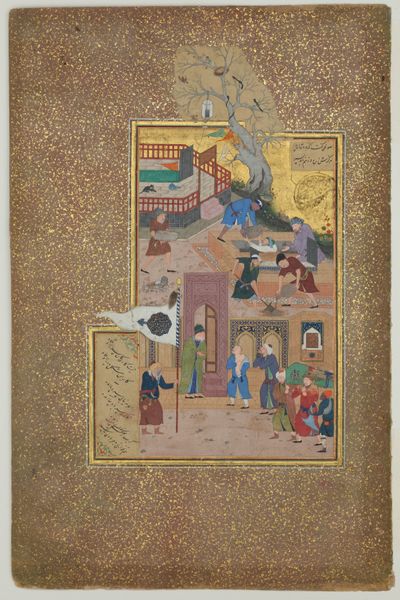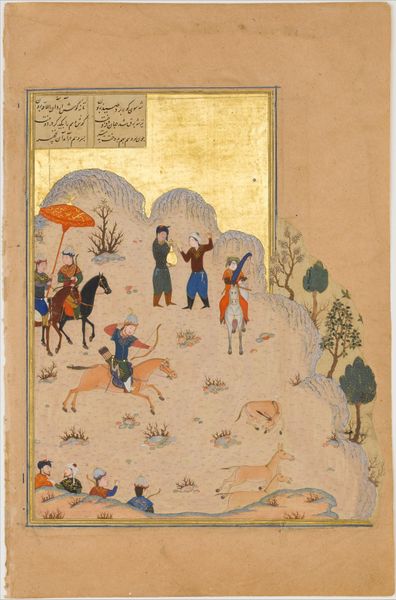
"Rustam rescues Bizhan from the Pit", Folio from a Shahnama (Book of Kings) 1535 - 1605
0:00
0:00
painting, watercolor
#
water colours
#
narrative-art
#
painting
#
landscape
#
figuration
#
watercolor
#
horse
#
men
#
islamic-art
#
miniature
Dimensions: Page: H. 14 5/8 in. (37.1 cm) W. 8 7/8 in. (22.5 cm) Painting: H. 10 3/4 in. (27.3 cm) W. 7 3/4 in. (19.7 cm)
Copyright: Public Domain
Curator: This watercolor painting, believed to have been crafted between 1535 and 1605, presents a scene titled "Rustam rescues Bizhan from the Pit." It is a folio originating from a Shahnama, or Book of Kings. Editor: The eye is immediately drawn to the dark oval at the center—a visual abyss! And the tension is palpable with all figures arranged to witness the man emerging from within, as if spotlighted in the theatrical space. Curator: Yes, the stark contrast between the illuminated figures and the black pit is certainly arresting. This miniature exemplifies the fusion of Persian artistic traditions with the patronage of Islamic rulers, created for an elite audience within a royal context, likely intended to visually reinforce the ruler's authority by representing stories of heroism and justice. Editor: Structurally, I find fascinating the compression of space. The placement of figures above and around suggests both depth and a flattened plane—it almost seems symbolic. The artist doesn't rely on one-point perspective, which lends a somewhat unrealistic character to the scene and shifts attention instead to the emotional interaction. Curator: You've articulated it beautifully. The painting's design emphasizes a narrative's moral and political meaning, portraying ideal virtues to guide princes through stories presented through the book. Such works had enormous socio-cultural significance in conveying narratives central to the court. Editor: Beyond the historical placement, the intricate linework forming faces, fabrics, and even ground textures deserves mention. Look at the fine rendering that defines form, especially against the rather subdued color scheme. And it must be stated that this contrasts with what we generally think of when describing large oil canvases and mural formats dominant elsewhere at the same period. Curator: Indeed, the artistic choices in coloring, like using specific blues or oranges in certain ratios or patterns, may allude to symbolic content that would have meaning to those schooled in Persian tradition and versed in complex cultural emblems from within the region and beyond. It's far from mere embellishment; instead, it seems a visual method designed both for admiration but moreover for the telling of stories and their cultural significance. Editor: Absolutely. After our dialogue, it makes me consider art as both something aesthetically appealing but moreover for providing ways into our history. I depart having greater insights into why the Islamic aesthetic tradition endures! Curator: I wholeheartedly agree. Appreciating that interplay of cultural and compositional aspects provides profound insight into understanding this masterpiece's significance and relevance for viewers today.
Comments
No comments
Be the first to comment and join the conversation on the ultimate creative platform.

